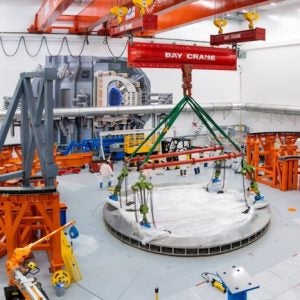Nuclear Power Corporation of India (NPCIL) has said that its Madras plant was unharmed by the tsunami of 26 December 2004, although 59 local people lost their lives.

Madras
Madras, on the south-eastern shore of India in the region of Tamil Nadu, is host to two seawater-cooled Candu PHWRs. It is part of the Indira Ghandi Centre for Atomic Research which also includes the Fast Breeder Test Reactor (TFBR) and reprocessing facilities. The Prototype Fast Breeder Reactor (PFBR) is under construction.
The first Candu unit was already shutdown at the time of impact but the second was operating at 210MWe, according to an NPCIL statement. The unit was automatically shutdown after the raised sea level flooded the seawater pump house and affected the operation of condenser cooling pumps. NPCIL said there is no concern of radiological release and the unit was resynchronised to the grid on 3 January 2005 following a 30 December 2004 inspection. Officials from the Atomic Energy Regulatory Board reported that: “All systems, services and structures were found to be in good condition. All radiological conditions in the plant are normal and there has been no release of radioactivity from the plant.”
The TFBR was situated far enough from the coast to have been unaffected by the waves but concreting work on the PFBR had to be stopped when floodwater filled an excavated pit. Work will recommence once floodwaters have been removed.
There has been no comment on possible damage to fuel cycle facilities at the site.
NPCIL reported that parts of the plant’s adjoining town were badly affected by the tsunami which rasied the sea to shoulder-level. Five Department of Atomic Energy workers and 25 of their relatives were among the 59 dead from the worker’s township.
- A ship carrying a pressure vessel for the twin VVER-1000s under construction at India’s Kudankulam site was at sea at the time of the tsunami but suffered no damage and docked normally on 3 January in the port of Tuticorin.






